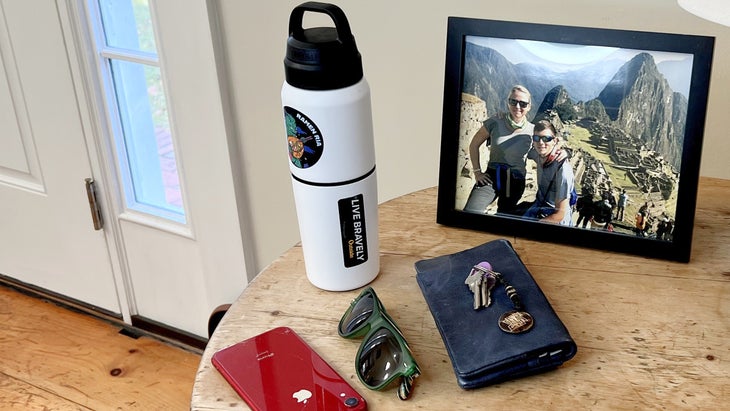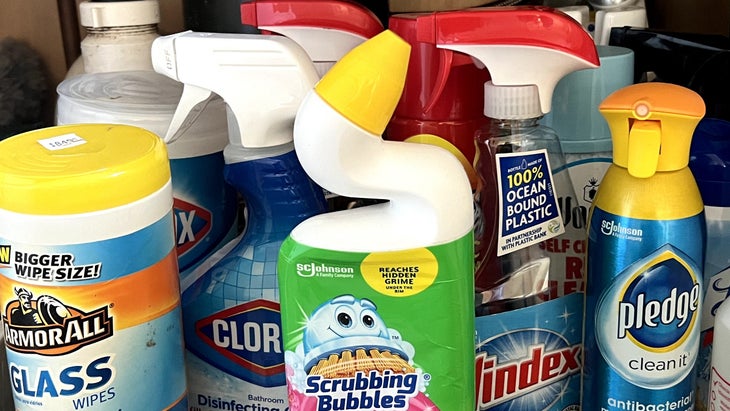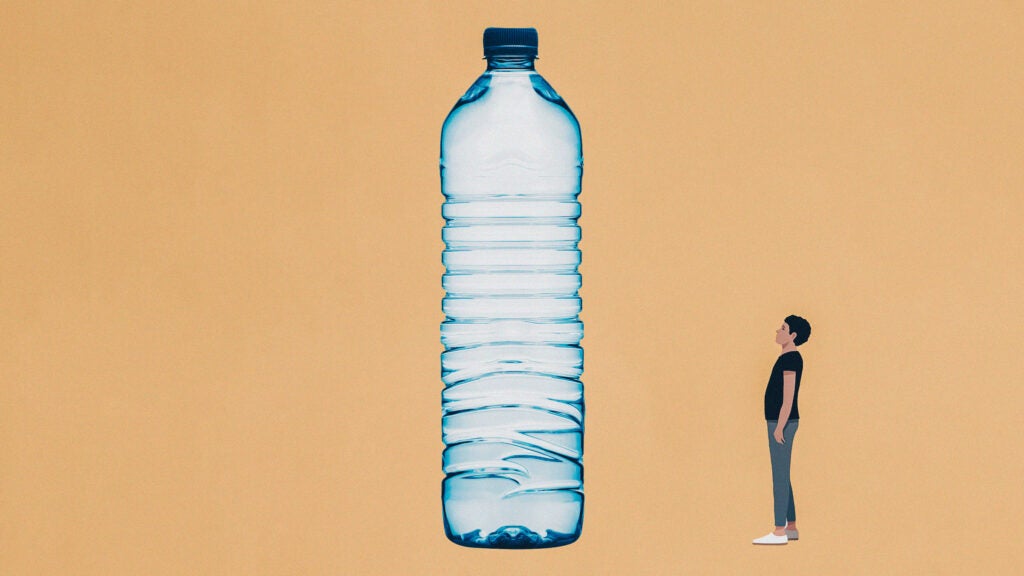No products in the cart.
Outdoor Adventure
This One Eco-Friendly New Year’s Resolution Changed My Life
Heading out the door? Read this article on the Outside app available now on iOS devices for members!
Download the app.
I’m sure I’ve made dozens of New Year’s resolutions in my life. I just can’t remember most of them because they didn’t stick. But one did, and it changed my life.
Six years ago, I swore off all drinks in single-use plastic bottles and my lips have not touched one since. It wasn’t even that hard. I just committed to having my reusable bottle with me at all times or going thirsty until I found a drinking fountain or a joint that would serve me a glass of water. I have yet to perish from dehydration.
Before I knew it, my water bottle became a thing I never leave home without, just like my wallet, sunglasses, phone, and keys. (Pro tip: I also keep one filled in my car’s cup holder, so if I do forget my bottle, I have a backup.)

The following year, I added single-use coffee cups. That meant no Starbucks for me unless I had my refillable mug. (I use the same insulated bottle for both coffee and water, so I’m still only carrying one vessel.)
Great, you’re probably thinking, but how did it change your life?
This small habit blossomed into a greater awareness in my day-to-day life. I began to notice—and refuse—all of the single-use items that we only use for a few minutes and then toss, like cutlery, bags, napkins, and packets of condiments. I stopped buying paper towels and plastic wrap. That led me to opt for package-free fruits and veggies, and to buy other grocery items in glass rather than plastic, so that I could reuse the jars. I started phasing out plastic containers all over my house–the shampoo bottles, the laundry soap, the dish soap, the milk jugs. Which led me to making my own non-toxic cleaning spray.
There’s more, too, like growing my own food, reducing food waste and composting, shopping second hand, and making presents rather than buying them. My journey is ongoing. None of this happened overnight, but slowly over time, as my eyes began to open about all the convenience items I’ve relied on that are junking up our planet. When we buy things like Ziploc bags and polyester t-shirts, we’re encouraging manufacturers to make more of them, which requires oil companies to keep drilling for those damn fossil fuels. It feels good to opt out of that cycle.
If you can’t tell already, I’m fired up about this lifestyle, and when I find a solution, like soap nuts to replace laundry pods, I can’t wait to tell my family and friends, as if I’ve just discovered a new planet or found a cure for the sniffles.
“If you’re interested in helping curb global warming, that means becoming a mirror for others to see themselves,” says Washington Post Climate Advice columnist Michael J. Coren. (Sign up for his excellent newsletter here.) “We can all take these individual actions, but the true impact we have is driven by the fact that we have the most profound influence on people around us. We act as billboards for taking climate action. The point is to move the transition that needs to happen from the abstract to the personal. And the best way to do that is to show people in your own life.”
What Coren describes has happened to me. My mom and son now always have their water bottles. My husband brings his own bags to the store. My brother is re-evaluating packaging at the restaurant and market he owns and operates. My sister-in-law started composting. My friend signed up for a milk delivery service with refillable glass bottles.

My plea to everyone: start with one small, simple, attainable thing. Hold yourself to it. Talk about it! And watch it spark beautiful actions and awareness all around you. I’ve compiled a list of easy eco-friendly New Year’s resolutions you can commit to come January 1st.
Bite-Size Eco-Friendly New Year’s Resolutions
- Switch to a dairy-free milk. Cows are really bad for the environment because they burp copious amounts of methane when digesting grass and require a lot of land. Soy and oat are often considered the most environmentally friendly. Almond and rice both require lots of water, and coconut, which is often grown as a monocrop in tropical areas, can harm soil and biodiversity. Plus, it often needs to be shipped long distances. But any of these choices are better than cow’s milk. Try one in your coffee, smoothie, or cereal. In some cases, though, like in potato leek soup or bolognese sauce, it’s tough to find a satisfying replacement for dairy, so just try to use it sparingly.
- Swear off shopping bags, once and for all. If you slip up, suck it up and load groceries directly from the cart into your car.
- Pick one day a week to break bad habits. You don’t need to stop driving altogether or go all in on veganism. But you could make just Mondays meatless or car-free without cramping your style too much.
- Clean out your fridge once a week and you can drastically reduce your food waste. Before you head to the grocery store, use up what you’ve already paid for. My favorite, infinitely adaptable go-to clean-out dishes are frittatas, fried rice, and the forager plate.
- Phase out one wasteful household item. Ziploc bags are a great place to start. Use up what you have, wash and re-use them till they’re gone, and then invest in reusable alternatives (like glass jars or silicone bags). You could kick the paper towel habit and start using rags. Or do away with plastic wrap and opt for beeswax wraps or silicone stretch lids.
- Say no to clothes you don’t need, especially “fast fashion” which is cheap, trendy clothing. It’s brutal on the environment. You don’t have to go cold turkey if you’re not ready. Pick just one category and commit to not buying any more unless they’re second hand. (T-shirts, jeans, or sweaters are all a good place to start.)
- Make 2024 the year of thoughtful, homemade gifting. For birthdays, Mother’s Day, Father’s Day, Christmas, and Hanukkah, plan ahead and try one of these ideas.
- Cancel unwanted catalogs. They sure do pile up. The U.S. Postal Service says junk mail accounts for 62 percent of our snail mail. I recently signed up for DMAChoice, a nonprofit that’s been successfully reducing unwanted mailings since 1971. It cost me $4 and claims to reduce promotional offers by 80 percent by scrubbing your name from direct marketing lists. I’ll delve into how it worked and how to do a purge of your mailbox in a future column. But for now, pick the 10 biggest intruders in your home (I love you, L.L.Bean, but please stop). Call the number on the back of the catalog and ask to be removed.
Doing right by the planet can make you happier, healthier, and—yes—wealthier. Outside’s head of sustainability, Kristin Hostetter, explores small lifestyle tweaks that can make a big impact. Write to her at climateneutral-ish@outsideinc.com.
Source link

